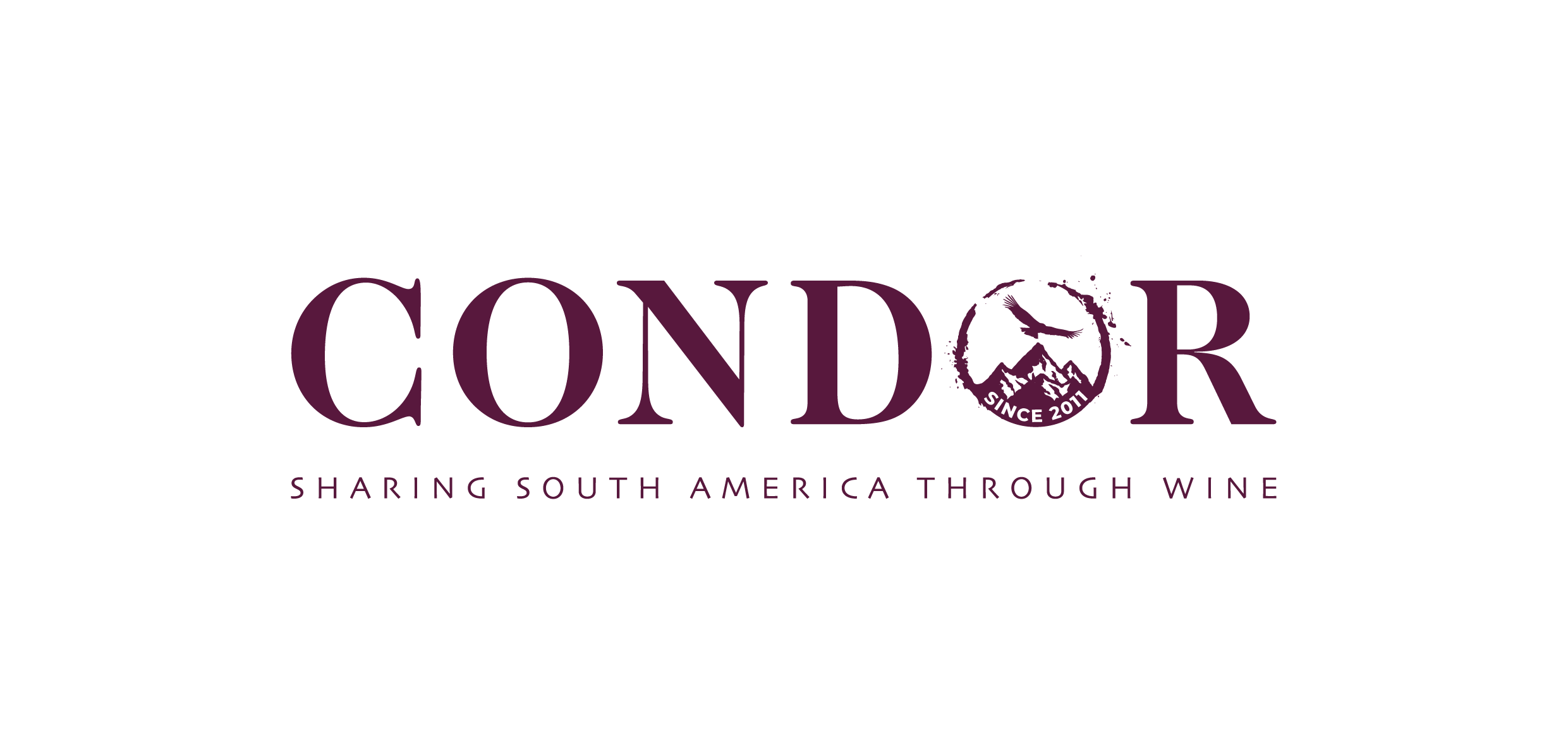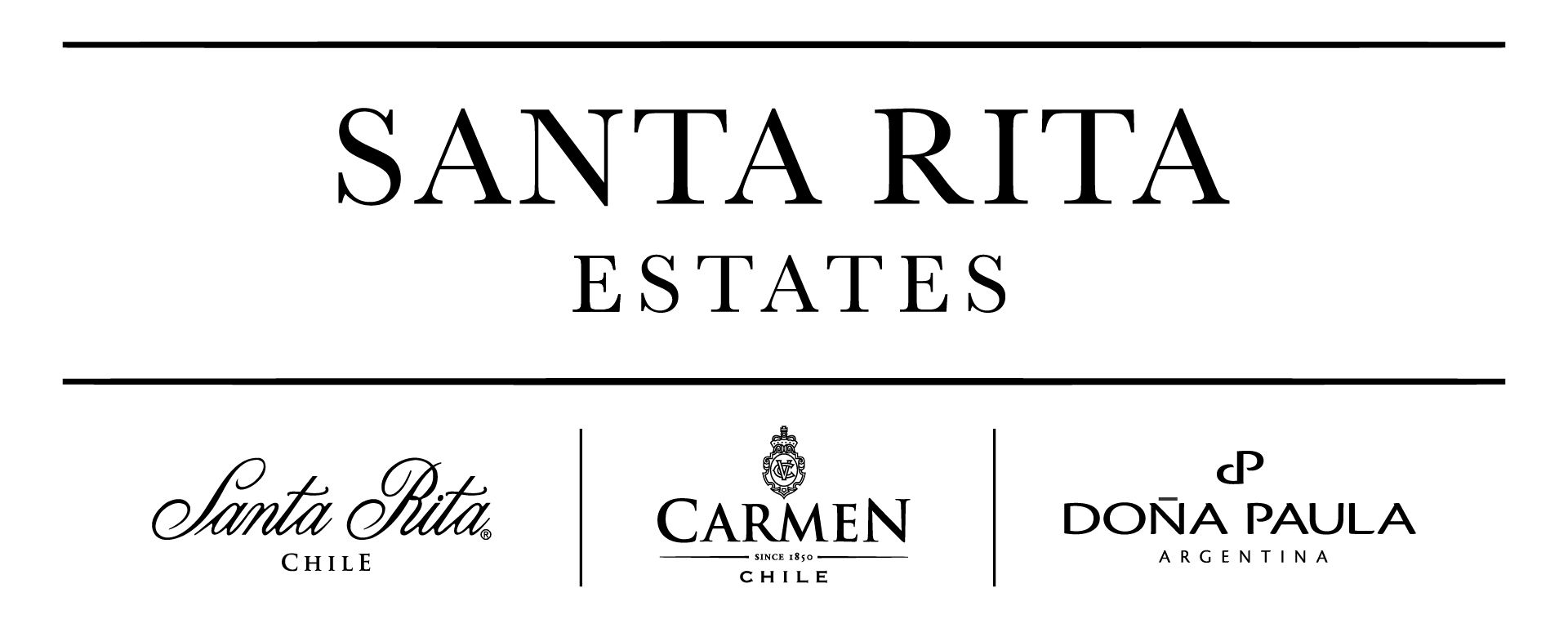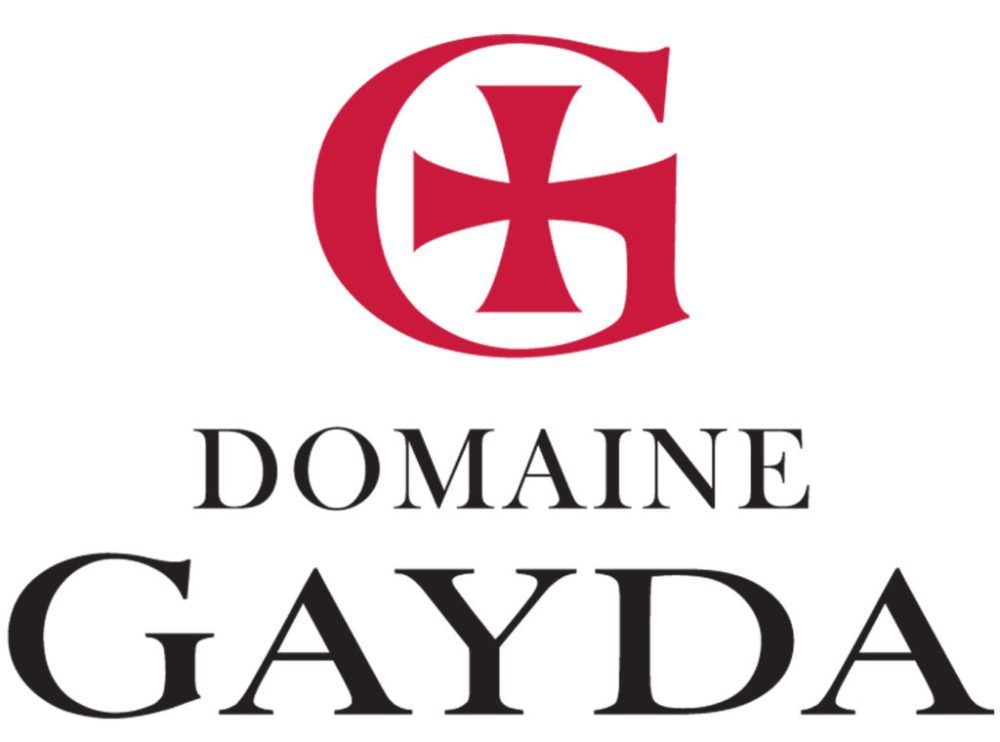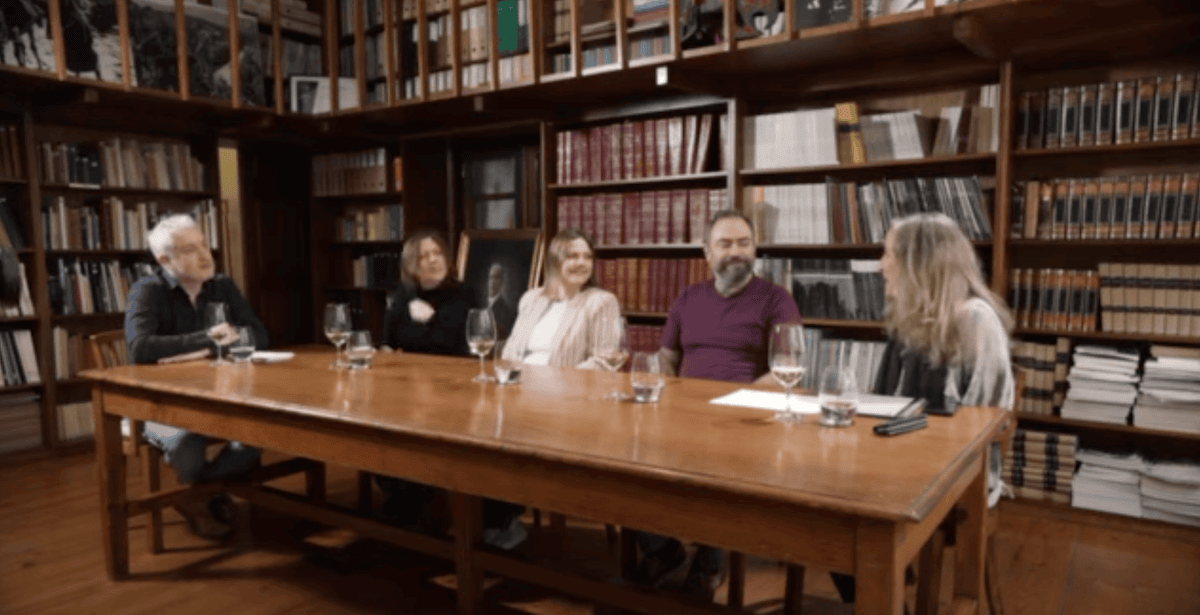Step into the foyer of Graham Beck’s imposing glass-fronted tasting room, sitting atop an elegant V-shaped pool at the end of a long tree-lined drive, and you’ll be confronted by the theory of ‘the bang to the pop’.
llustrated by cartoons and photographs, on a huge mural adorning the back wall, it tells the story of South African’s best known bubbly, from the early tectonic shifts that ultimately created the estate, through to the present day cuvées that now define it.
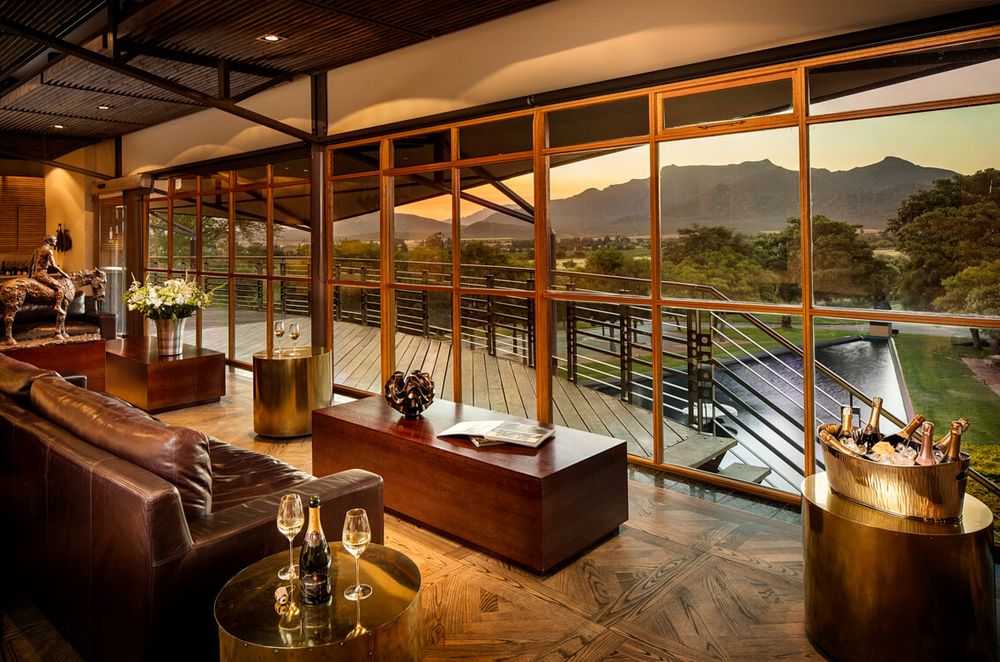
As tasting rooms go...the view from the visitors area at Graham Beck
Beck purchased the 3,000 hectare property, just outside the Western Cape town of Robertson, in 1983.A Cape Town businessman, who had made his fortune in the coal mining business, his enthusiasm for the farmstead was inspired by his love of breeding racehorses - the paddocks remain to this day - but his greater goal was to create a world class winery to produce ‘South African Champagne’, destined to become known as Cap Classique.
Though Beck may not have known it at the time, the site, with its rich limestone soils, proved to be ideal for the cultivation of Chardonnay and Pinot Noir and, later, Meunier too.
Graham Beck died in 2010, but his legacy is a sparkling wine powerhouse, now owned by a family trust, with son Antony Beck still closely involved in the business.
The history boys
The first Cap Classique actually dates back more than half a century to 1971, when Stellenbosch winemaker, Frans Malan, inspired by a visit to Champagne, decided to make a South African version, by the same traditional method process, albeit using Chenin Blanc.
A few years later, another pioneer, Achim von Arnim, opted to use the Champagne grapes for his inaugural sparkler, creating Pierre Jourdan, in Franschhoek, the first specialist producer of Cap Classique in South Africa.Working alongside him duringthat period was a young apprentice winemaker called Pieter Ferreira.

Pieter Ferreira, aka "Mr Bubbles", says he is still researching, analysing and looking to make different and better quality styles of Cap Classiques
Graham Beck had the good fortune to cross paths with Ferreira a few years later, and the good sense to hire him. And the rest is vinous history. Becoming cellar master in 1990, one year later Ferreira crafted the first vintage of Graham Beck Brut Cap Classique under the stars, as the fledgling winery was yet to be fitted with a roof.
Just three years later, the cuvée was granted the honour of being served for the inauguration of Nelson Mandela as South Africa’s first democratically-elected president and went on to be served at the party to celebrate Barack Obama’s first US presidential win.
Yet, after more than three decades overseeing an operation producing around 2 million bottles per year, more than two thirds of it exported,Ferreira tells us, with a wry smile, that he is “still in pursuit of the perfect bubble, and long may we not find it”.
Innovation through experimentation
Though he could be forgiven for resting on his laurels, Ferreira - who is officially chief operating officer but happily embraces the nickname ‘Mr Bubbles’ - is, in fact, a restless innovator who has dedicated his life to sparkling wine and will never stop experimenting.
“If you think you know something, it’s not all over, you can always learn more. When it comes to understanding research, people will consider verticals and the like, but if you want to lead you need to really invest. We started our R&D work back in 2014 so we have a very good understanding of what we need to do,” he explains.
Ferreira invites us to taste a range of wines, the result of a series of different experiments, from site selection to choice of fermentation vessel and bottle closure.
“We never chase ripeness but we do chase the sun. The effect of the arc of the sun is fascinating; aspect is one thing, but intensity is another. This helps us to develop our future planting plans,” he says as he hands us two samples, the first from a north-facing plot, the second south-facing, so each having different exposure to sunshine across the day.
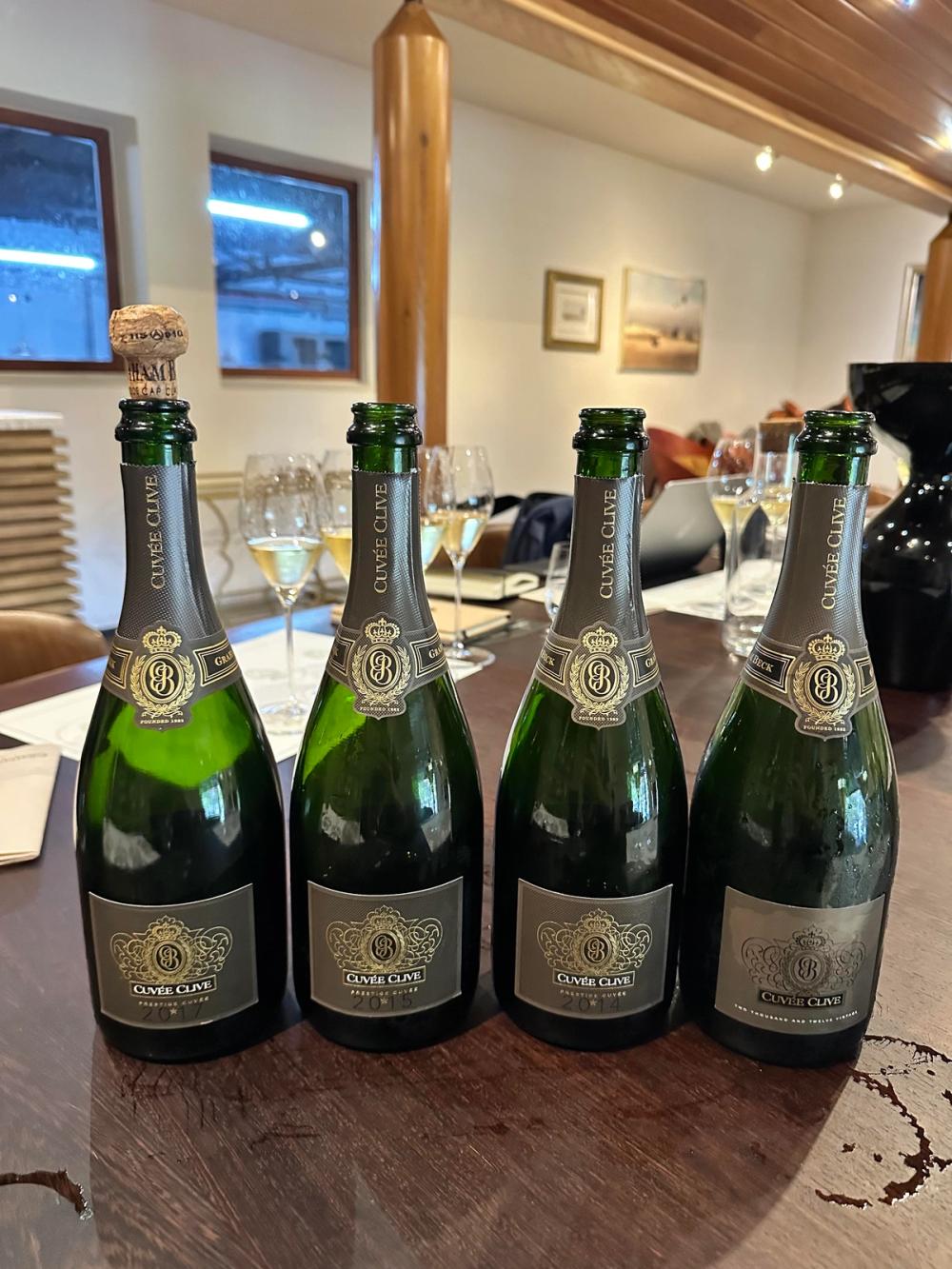
The different styles of Cap Classiques at Graham Beck
Both wines are similar on the nose, perhaps with more notable crisp apple aromas on the first. The second is smoother and slightly plumper on the palate, while the acidity feels more pronounced on the first.
Ferreira explains that three things make Robertson special: plentiful sunshine, the highest occurrence of limestone in the Western Cape; and the biggest diurnal temperature shift, as much as 20 degrees between daytime high and nighttime low.
Though estate fruit constitutes 70% of production, the team also source grapes from a dozen different geographical regions, to target specific fruit profiles for the blending process, courtesy of long-term relationships based on handshakes rather than contracts.
All grapes are hand-picked, using night harvesting techniques to preserve freshness. Nearly all (95%) of Graham Beck’s output is non-vintage, with a ‘perpetual reserve’ used for up to 12% of the blend.
Vessels and closures
The next experiment involves choice of fermentation vessel.
“There’s no right or wrong, it’s a matter of identifying the contribution each vessel can make,” he explains, as we begin to sample four glasses of Chardonnay 548, originally a Burgundy clone, from the same plot.
The first is firmer, with a more pronounced acid definition, number two is creamier, reminiscent of lemon posset, the third has a ‘tutti frutti’ tropical profile, while the fourth is slightly softer, more floral, broader, arguably more leesy in character, with greater persistence.
It turns out the first was from terracotta, the second a ceramic vessel, the third from a fairly neutral (third to seventh use) barrel and the final example came from a 500 litre foudre. Terracotta is currently used on Meunier and Pinot Noir, while barrels, or foudre, are preferred for Chardonnay.
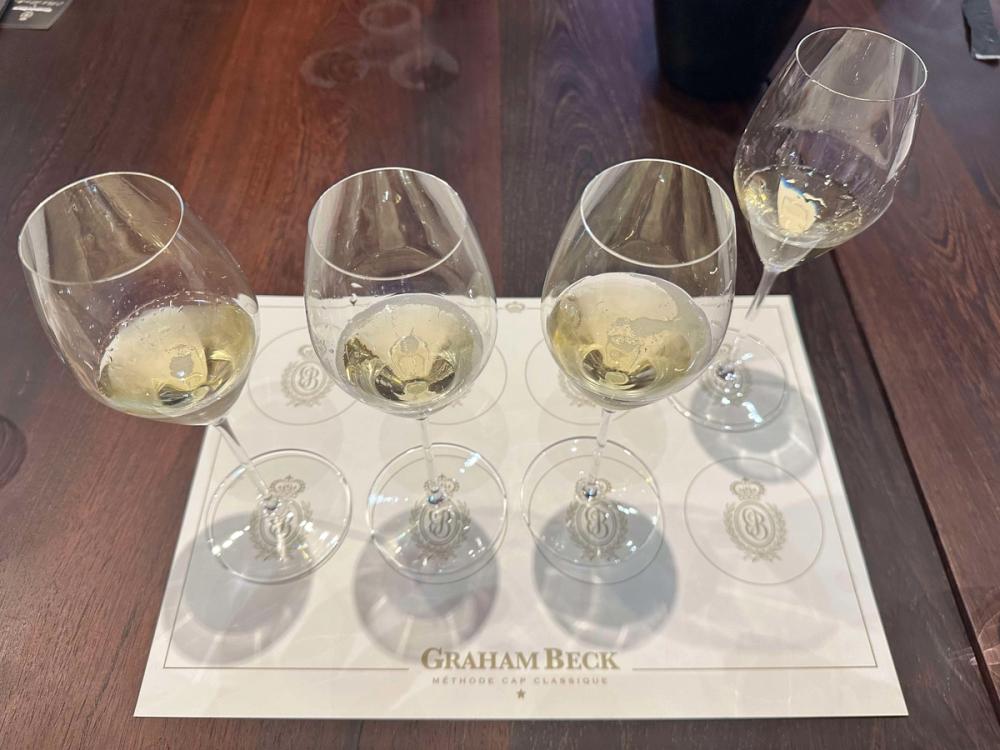
David Kermode had the chance to compare four different styles of Cap Classique
Finally, we taste four examples of the same sparkling wine, a 2020 Blanc de Blancs, aged under different closures. The first three examples have all been held under crown cap, from different manufacturers, with a different level of tightness to the closure, thus subtly impacting oxygen ingress. Though the difference is nuanced, it is definitely evident, with the tightest crown cap producing the nerviest of the wines.
As a result of the R&D work, the tightest cap is now being used on the smallest, half bottle format. The fourth example, developed under cork is tangibly different, exhibiting more complexity and energy. Ferreira reveals that a cork is more than five times the price of a crown cap, though you get the sense that financial considerations play second fiddle to decisions around quality and sustainability.
“We work to three pillars: first, the quality of our product, it’s non negotiable; second, we can only be as good as our people, so we invest in them; and the third is conservation, we preserve 12 hectares for every one we farm, we use green energy, we are WWF biodiversity champions and 95% of the water used in winery is recycled for the vineyards.”
Highlights from the range
The UK is Graham Beck’s largest export market, followed by the US, and the brand currently has an 80% share of UK Cap Classique sales. Ferreira confesses that he would be happy to have a smaller share of a larger market, but he believes consumer education remains the key challenge for South Africa’s signature sparkler.
The Graham Beck core portfolio extends to nine different cuvées, all of which offer an extraordinary ratio of price to quality, most especially the flagship Brut sparkler, boasting a gorgeous orchard fruit profile.
South Africans have a taste for slightly sweeter styles, so Graham Beck’s demi-sec style, Nectar, is hugely popular in the domestic market. Though it has 34g of residual sugar, it’s well balanced and surprisingly delicious, even though my usual preference is for wines to be as dry as a bone.
Seemingly made for my palate, Ultra Brut (previously known as Brut Zero, the name was changed because some people apparently thought is was zero alcohol), two thirds Chardonnay, the remainder Pinot Noir, offers a cool, refreshing citrus character, not unlike a cold shower. Ferreira calls it his ‘skinny jeans’ wine and, though it might be a touch austere on its own, it has great gastronomic potential.
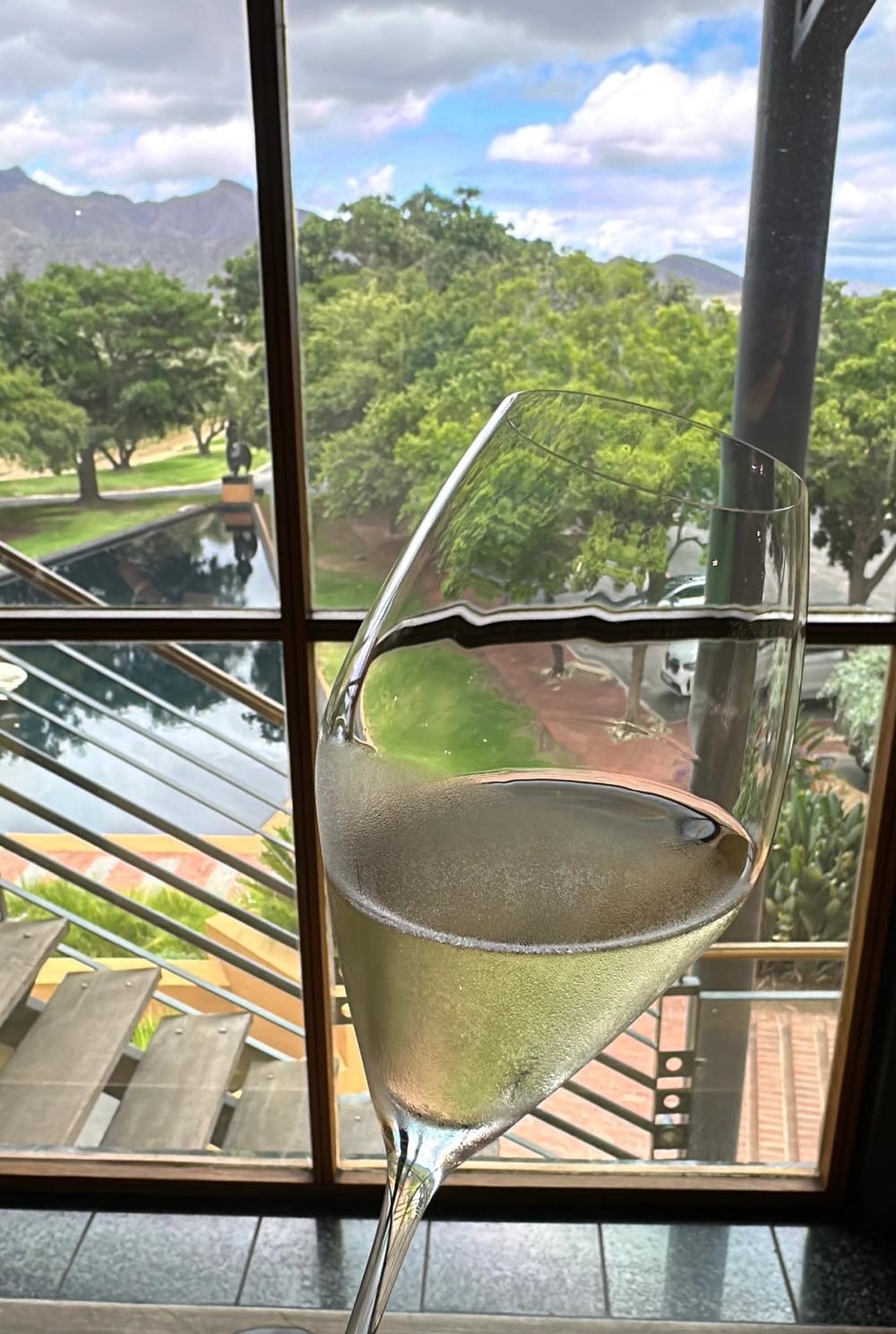
A glass of Cap Classique...with a view
A relatively new addition, Artisan Collection Pinot Meunier 2022 is the first commercially released 100% Meunier from South Africa, of which the cellar master is justly proud. With a delicate, enticing nose, crunchy red apple acidity, the palate is fresh and juicy with a pronounced green age character and a very different flavour profile to Pinot Noir.
At the pinnacle of the portfolio, Cuvée Clive, a blend of Chardonnay and Pinot Noir, produced only in exceptional vintages and in extremely limited quantities, using only the tête de cuvée (first press) juice: a feast of lemon zest, plump orchard fruits, nougat, shortbread and raw macademia, with a long ethereal finish, to me it rivals high end, much more expensive Champagne, a point that’s not lost on Ferreira.
“We are not trying to be like Champagne, we understand and respect it, but we are seeking to be uniquely South African. We are trying to create the perfect bubble.”
* To find out more about Graham Beck’s Cap Classiques go to its website here.


